Stories about weapons. Small amphibious tank T-38
During operation in the troops, it turned out that the T-37A has a lot of flaws: the transmission and the undercarriage are unreliable, the tracks often fall down, the reserve is low, the buoyancy reserve is insufficient.
Therefore, the plant design bureau №37 (head N.Astrov) began work on improving the T-37А at the end of 1934. It was supposed to eliminate the identified shortcomings of the T-37A, mainly to improve the reliability of the units of the new amphibious tank.
The first experimental tank was built in the summer of 1935 and underwent factory testing from 3 to 17 in July. According to their results, the tank practically did not differ from T-37А and the question of its further fate remained open. Strange as it may seem, competing firms "saved" the situation.
The tanks designed by P. Shitikov and TM from GAZ turned out to be even worse. Tank Astrov hit the undisputed favorites.
As a result, a modernization of the T-37А, aimed at improving its running characteristics, was carried out. "It seems to be" - because there was another tank at the exit.
However, compare yourself:
Commander and driver swapped. Honestly, I did not find clear considerations and reasons for what it was done, but I don’t want to voice the “versions”. But the fact is, the main external difference between T-37 and T-38 is the location of the tower.
Other layout (engine, transmission, tanks) left absolutely the same.
However, the T-38 has changed (and greatly) in another. The tank became lower and wider, which should increase its stability afloat. Changes in the hull have allowed to abandon the nadgusenichnyh floats, however, the regiments are back. In addition, a few have changed the suspension, and it seems that the stroke became smoother and the speed slightly increased.
The main change inside is the substitution in the control mechanism of the automobile differential for side clutches for turning.
The undercarriage was in many respects identical to the T-37A, from which the design of the suspension carts and the tracks was borrowed. The drive wheel design was slightly changed, and the guide wheel became identical in size to the support rollers.
To move the car afloat, a three-bladed propeller and a flat steering wheel were used. The screw was connected with a power take-off reducer attached to the gearbox with the help of a propeller shaft.
Armament T-38 remained the same - 7,62-mm machine gun DT, mounted in a ball mount in the front plate of the tower. The tower was structurally the same as that of the T-37A.
The machine was adopted by the BT Red Army in February 1936 of the year and was in production until 1939 of the year. Total industry has been released 1 382 tank T-38.
The assembly of the “new” T-38 went in parallel with the “old” T-37А. This was not done by chance. It seems that the corresponding advertising campaign was carried out, the hero of which was T-38, which was presented as “a new, unparalleled ...”
However, in fact, there are many flaws and defects. An amazing amount for a machine that was “bug fixing”.
First of all, the floating tank T-38 was ... not very floating. In general, he sailed, but with a bunch of reservations and restrictions.
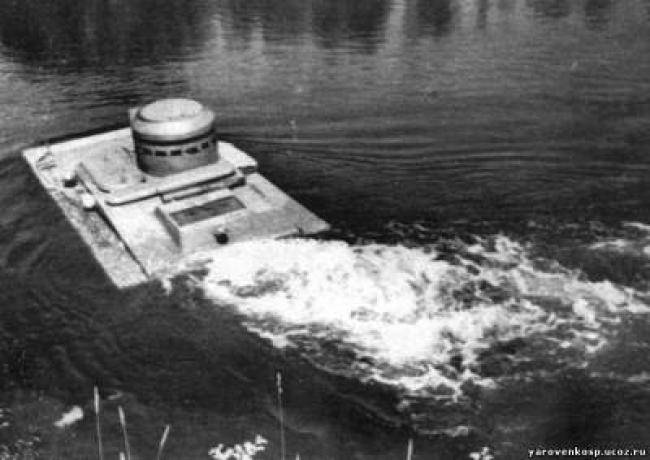
The photo shows that the lattice of the engine compartment from the water is not so far away.
When driving on water it was forbidden to perform sharp maneuvers at maximum rotor speeds or turn on the reverse. In such a situation, the tank "pecked" nose and ... sank! Sharply giving the steering wheel a maximum of left or right was also undesirable. The result could be the same as when turning on the reverse.
As a means of landing T-38 was also not very good. To be honest - he was nothing at all! When forcing water obstacles on the screw, two infantrymen were very heavy for the typewriter.
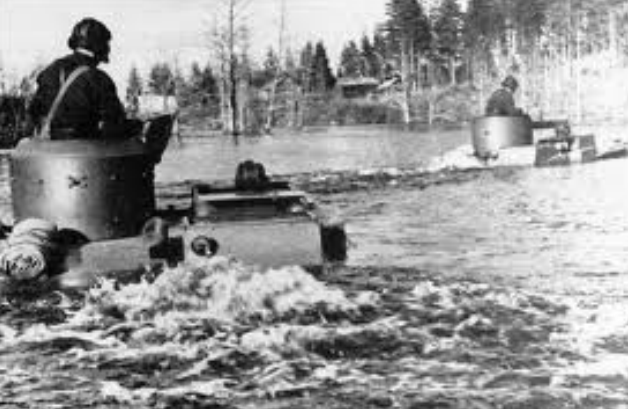
When driving on rough or swampy terrain, the power of the automobile engine was clearly not enough, the engines overheated and failed.
They criticized the completely unchanged reservation and armament, which clearly did not correspond to modern concepts.
"To the heap" and the price of the tank has grown considerably. Here, of course, not those times to steal, you know. But something with the T-38 obviously went wrong. He clearly turned out worse than its predecessor, the T-37A.
All this led to the fact that in the spring of 1937, the release of the T-38 was temporarily discontinued. However, it continued again in 1939, when ABTU allowed the plant # XXUMX to complete the construction of tanks from the existing reserve of parts.
The situation, on the one hand, is clear: there are details, why not put it together? Or send to the furnace, the metal at that time was in short supply.
On the other hand, the tank is not the best one. And its characteristics are a huge question in terms of compliance. But the machine that was supposed to replace the T-38, that is, the T-40, had not even left the design stage.
And not the fact that it would be better. This is not one month of work.
As I understand it, they simply decided that “the good should not be lost,” and they collected a little more than a hundred of the already existing T-38. 112 units.
Tank T-38 was intended to equip reconnaissance battalions of rifle divisions, reconnaissance companies of individual tank brigades. In general, just like its predecessor, the T-37A. Often the tanks were in service with individual parts at the same time. That was not surprising, considering their unification.
TTX T-38 tank
Combat weight - 3,3 t;
Crew - 2 person;
The number of issued - 1340 pieces.
dimensions
Body length - 3780 mm;
Case width - 2330 mm;
Height - mm 1630;
Ground clearance - 300 mm.
Reservation
Type of armor - steel rolled homogeneous;
The forehead of the body (top) - 9 mm;
The forehead of the body (middle) - 6 mm;
Chassis side - 9 mm;
Body Feed - 9 mm;
Bottom - 4 mm;
The roof of the case - mm 4;
Tower - 8 mm;
weaponry
Machine gun - 7,62-mm DT.
Mobility
Engine type - inline 4 ‑ cylinder carburetor liquid cooling;
Engine power - HP 40 .;
Highway speed - 40 km / h;
Speed over rough terrain - 15-20 km / h;
Speed afloat - 6 km / h;
Cruising on the highway - 250 km;
Gradeability - 33 degrees;
Breakable wall - 0,5 m;
Overcoming ditch - 1,6 m.
The main modifications of the T-38:
T-38 - small amphibious tank (1936, 1937, 1939);
SU-45 - self-propelled artillery installation (prototype, 1936 g.);
T-38РТ - tank with radio station 71-ТК-1 (1937);
OT-38 - chemical (flamethrower) tank (prototypes, 1935-1936);
The T-38-TT is a telemechanical group of tanks (1939-1940).
There were also attempts to improve the T-38 in the form of modifications of the T-38М1 and М2 by installing the GAZ-М1 engine (50 hp) and increasing the displacement, but they remained single copies.
The T-38Sh tank, armed with a ShVAK 20-mm cannon (TNSh), adapted for installation on tanks, remained in one copy.
Here you can clearly feel the size of the T-38 on the background of the "huge tank" BT-7 ...
Combat application.
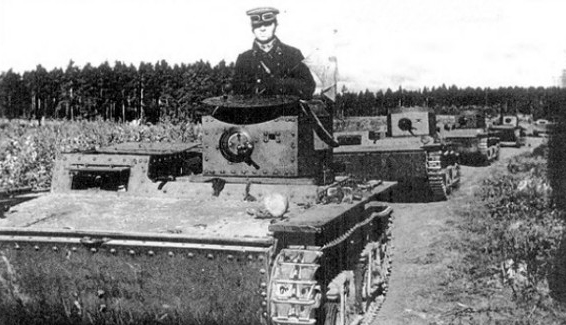
In principle, the T-38 participated in all the battles as the T-37.
The first campaign was the Polish in 1939. Basically, the tanks conducted reconnaissance, but on September 20-22 the amphibious tanks were engaged in battles near the town of Kholm. Losses amounted to only three T-38, but the general reviews of the T-38 were very critical.
There was a low speed and easily broken suspension and transmission.
In the Soviet-Finnish war, the active armies numbered 435 amphibious tanks of all modifications, representing 18,5% of the total. In most cases, the T-38 was used to protect the headquarters, communications and escorts of equipment columns, but from time to time they had to participate in direct clashes with Finnish troops.
One of the first episodes was 2 December 1939 d. The Finnish position sent for reconnaissance at the Eno 361 station, the tank battalion of the 70 rifle division of the 7 Army of the North-Western Front, consisted of the 10 T-26 and 20 T-38, conducted difficult crossing over the river, but the combat task is completed.
When they retired to the starting line, the tanks entered the battle with the Finnish infantry and artillery that had entered the rear of the Soviet units. During the battle, which lasted all night, three T-38s were shot down by artillery fire, but in the end the tanks completed the task, disrupting the enemy’s plans. Subsequently, the battalion supported the advance of the infantry units having lost all 10 tanks during the fighting.
Also successful was the use of amphibious tanks as part of the 381 tank battalion of the 14 Infantry Division, in which there was one T-26 and T-38 company. Caught surrounded by tankers buried them in the ground on the tower, turning them into improvised firing points. In the case of attempts to break through the Finnish troops, the T-38 moved to the most dangerous areas, supporting my infantry.
The total loss of amphibious tanks in the Winter War amounted to 94 units T-37A and T-38, which could be considered a good indicator.
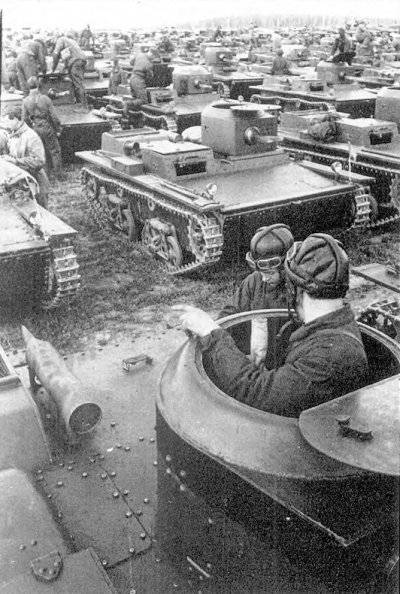
However, the tank quickly played in the "outdated", which in principle was not an exaggeration. On 15, in September, 1940 required medium and major overhaul around 40% of T-38 tanks, but due to the lack of spare parts and outright reluctance to re-commission obsolete equipment, they preferred to keep them in warehouses or in training units.
The result was that a number of mechanized corps and rifle divisions had floating tanks only on paper.
In this respect, only the 6 th mechanized corps (Western OBO, Volkovyssk region) in which there were 110 T-37A and T-38 turned out to be the most combat-ready, but no exact data remained on their technical condition. Unfortunately, information about the combat use of T-38 tanks during the Great Patriotic War was not preserved either.
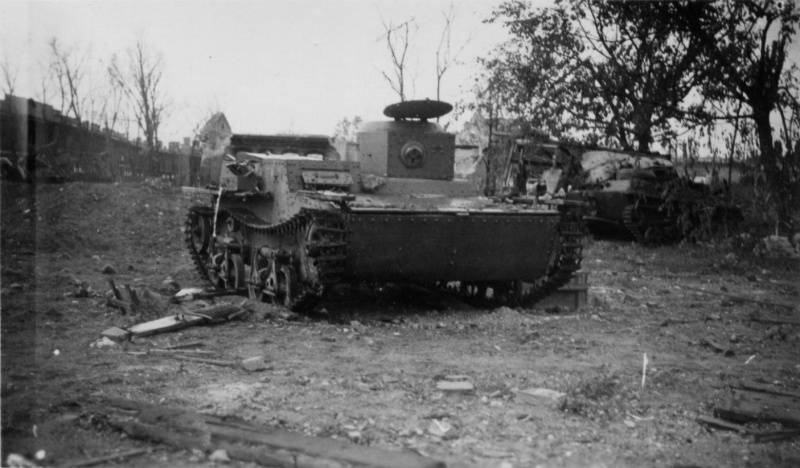
But the 6th mechanized corps, quickly enough surrounded, lost more than half of its equipment on marches or from German attacks aviation. Not a single floating tank could be removed from the encirclement.
Results
No matter how funny it sounds, but T-38 practically has no analogues in the tank world of that time due to the absence of amphibious tanks in other countries at that time.
There have been attempts to create such a machine in many countries, but the results were even sadder than ours. It was bad here, but it was swimming, the Germans, the French and the Poles only dived samples. Once.
If we compare the T-38 with quite numerous non-floating light tanks, we can safely say that this is the usual mediocre such machine gun wedge. In many countries, Cardin-Loyd was copied, so everything was more or less similar.
But the value of the T-37A and T-38 tanks (which we can safely call the T-37B, for example) is not the case.
These machines allowed to test the very idea of enhancing the combat power of airborne and water landing forces.
Lightly armed, due to the specifics of the use, the landing forces always needed mobile armored means of fire support when they captured and held their positions.
It was T-37A and T-38, despite all their shortcomings, were the first machines that could be quite successfully used in this role. They could swim and navigate through the air using the TB-3 carrier aircraft. Armored self-propelled machine gun for landing.
I’m not very much wrong with the truth if I say that T-37A and T-38 allowed the Soviet designers to “get a hand”, which resulted in the creation of such machines as PT-76, BMD-1, BMD-2 and further list.
Sources:
Kolomiets M.V. Miracle-weapon Stalin. The floating tanks of the Great Patriotic T-37, T-38, T-40.
Baryatinsky M. B. The Amphibians of the Red Army // Model Designer.
Kholyavsky G.L. The complete encyclopedia of tanks of the world 1915 — 2000.
Svirin M.N. Stalin's armor shield. History Soviet tank 1937 — 1943.
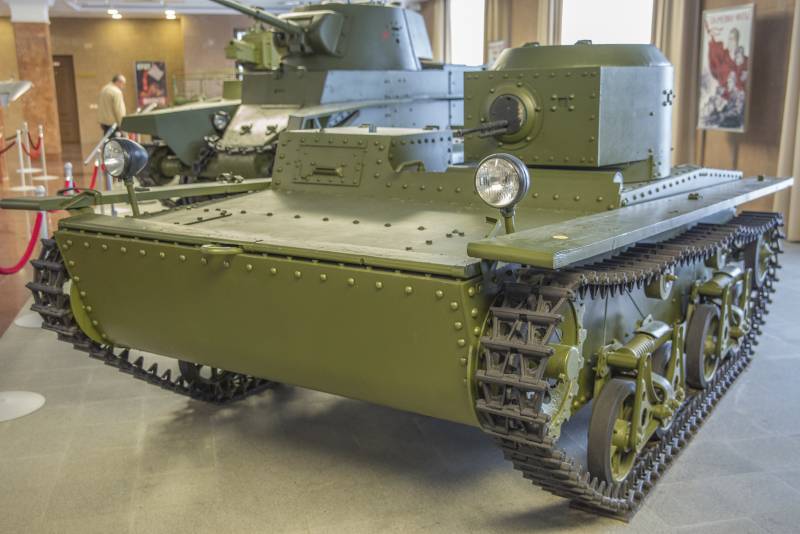
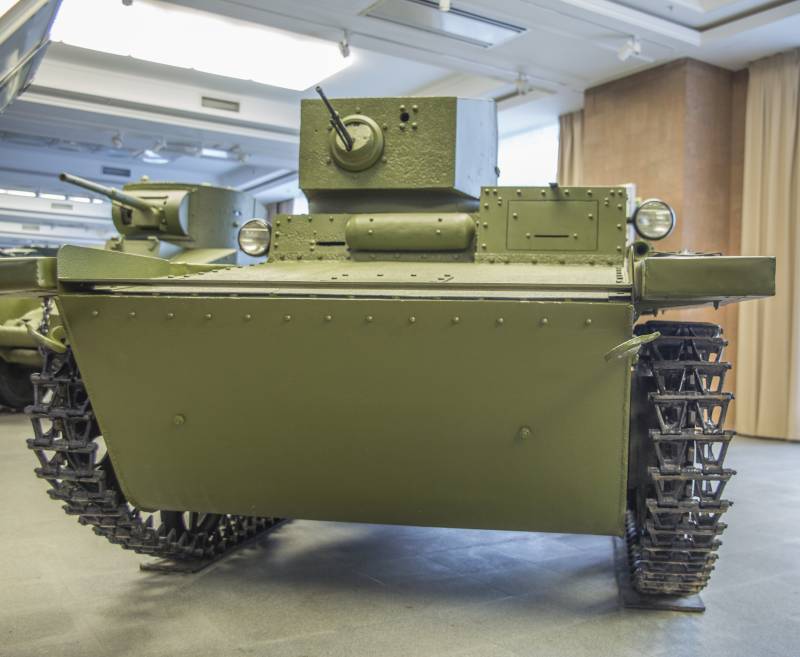
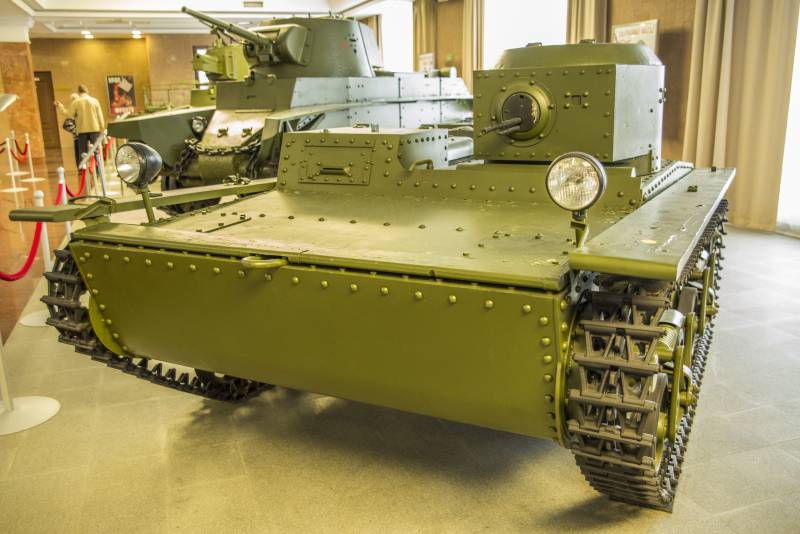
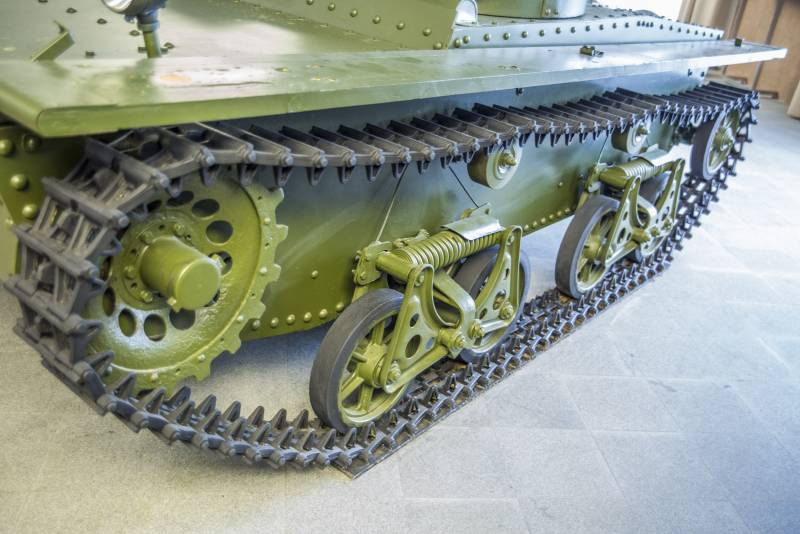
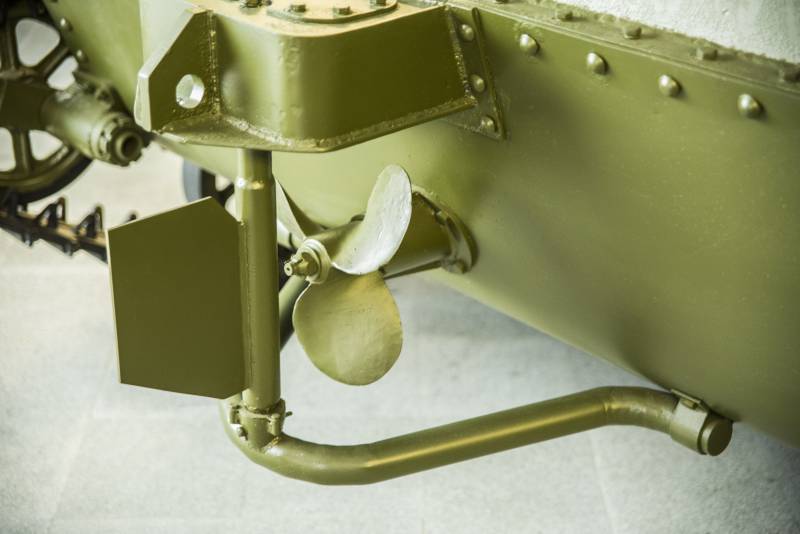
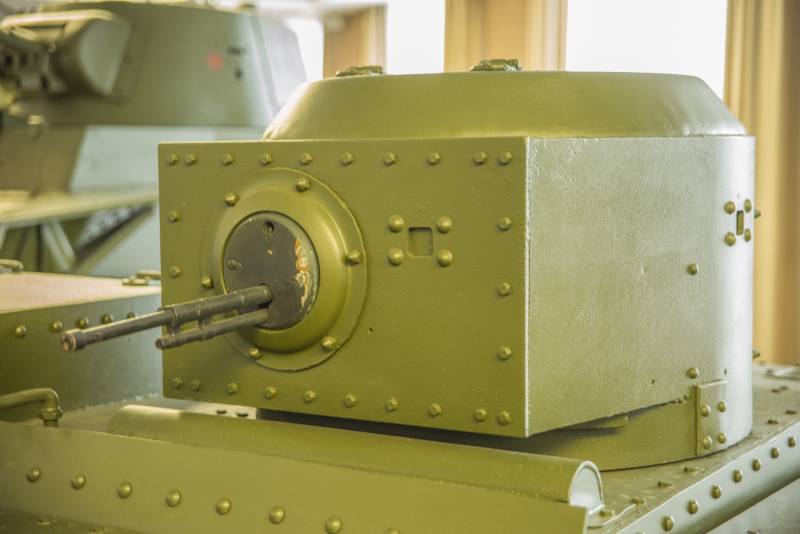
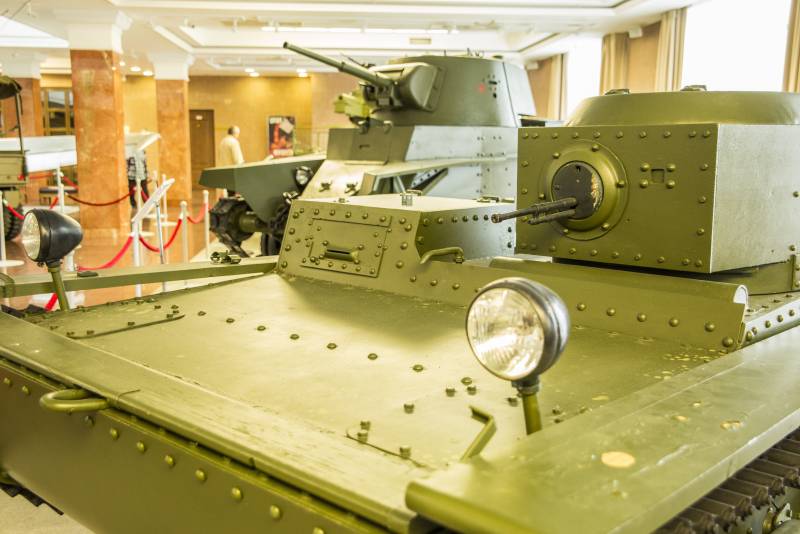
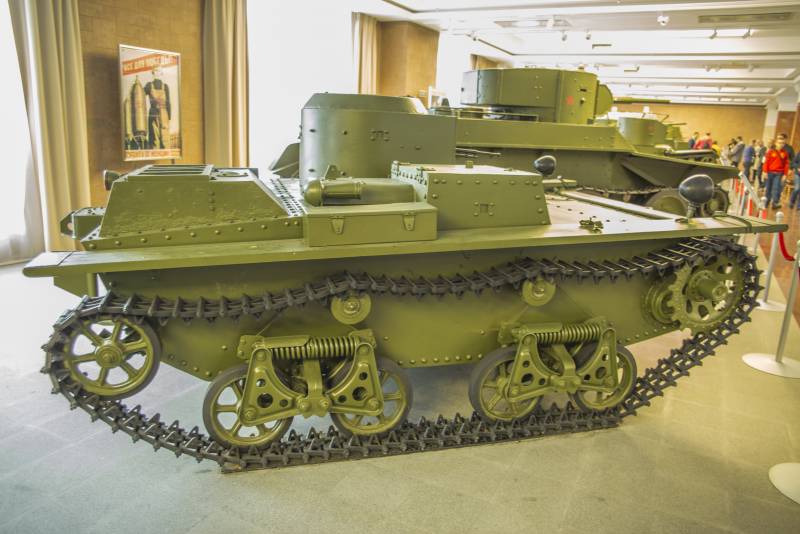
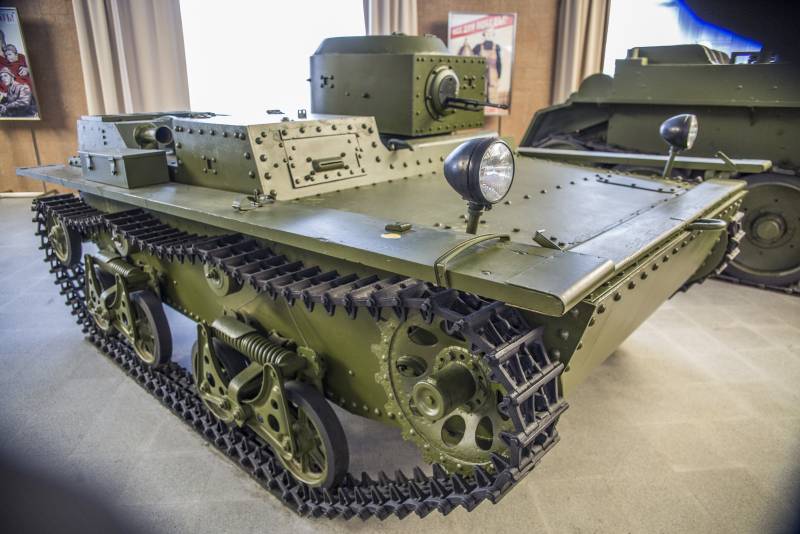
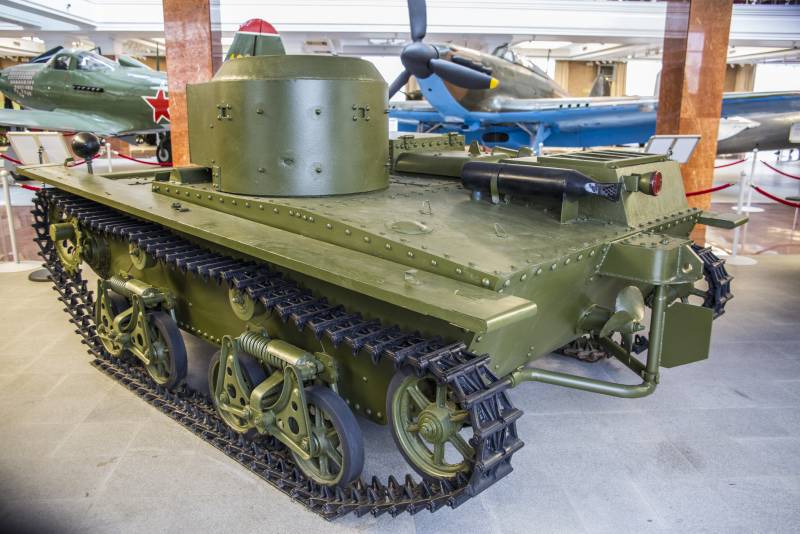
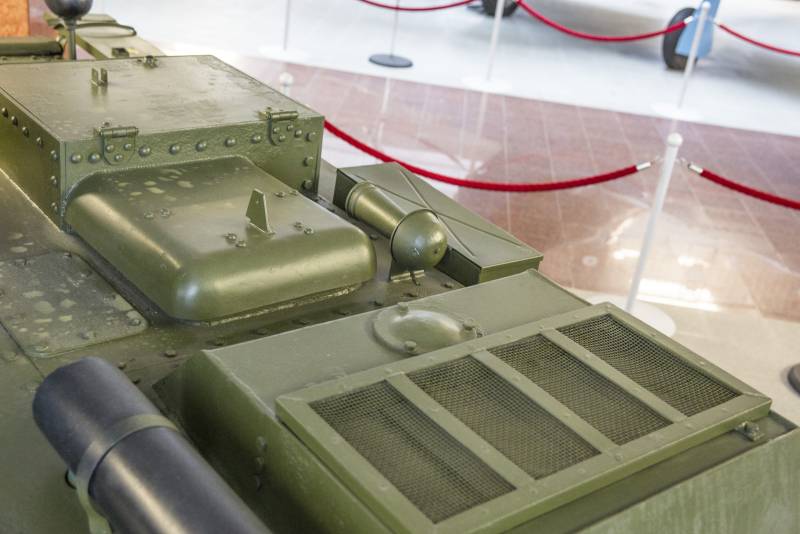
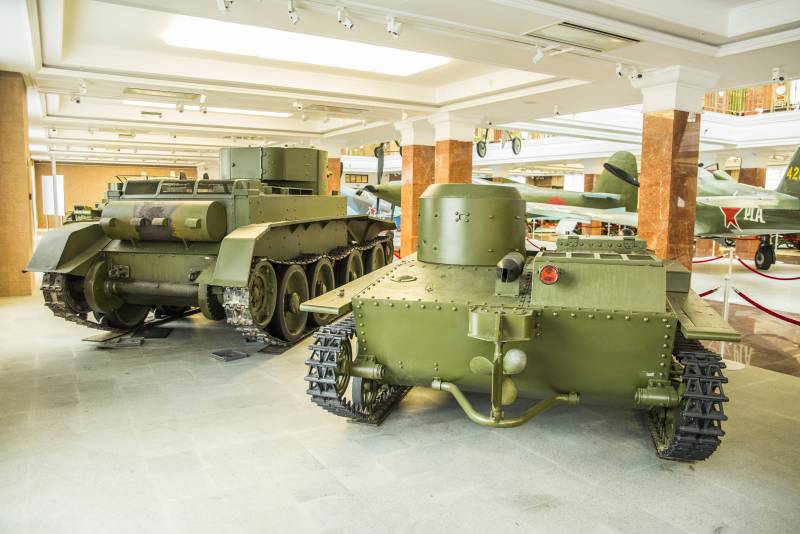
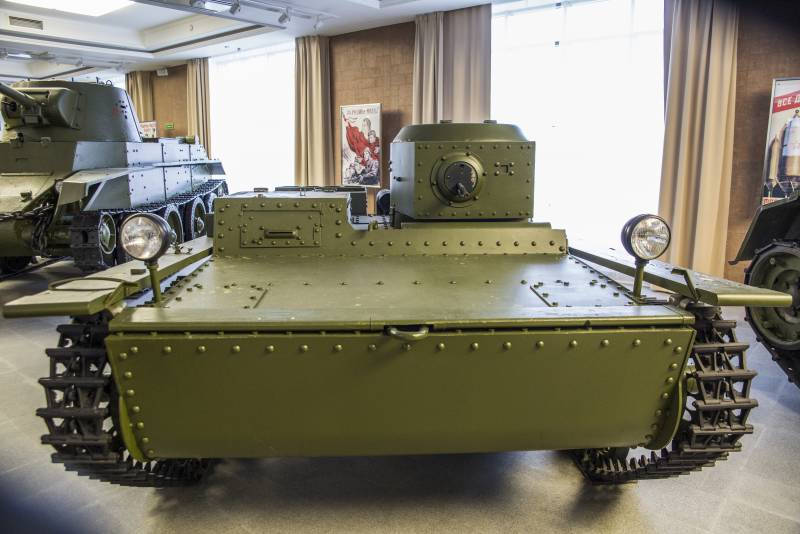
Information